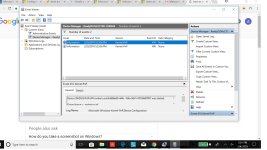Microsoft has released an updated guide on driver security. This new guide offers advice that developers could use to ensure Windows drivers are secured against basic attacks and preventable flaws.
The new guide —also available as a one-document
PDF— is authored by Microsoft's Don Marshall and comes to replace an older help page and includes:
→ A
security checklist for driver developers
→ A guide on
driver threat modeling
→ A
guide on how drivers should integrate into the overall Windows security model
→ A tutorial on
how to use the Device Guard Readiness Tool to evaluate a driver's Hypervisor-protected Code Integrity (HVCI) compatibility
While the driver security checklist is a must-read for any software developer and not just driver authors, the guide on assessing "threat modeling for drivers" is also something that software engineers should take a peek at.
